
Home |
About Us |
How to Participate |
Biodiversity Modules |
Projects |
Maps |
News |
Resources

Home |
About Us |
How to Participate |
Biodiversity Modules |
Projects |
Maps |
News |
Resources
|
Definition of "Wetlands" - General Code 500: Vegetated areas where plants are rooted in water or water saturated soil or that regularly tolerate flooding for extensive time periods. |
Wetlands: Estuaries including all vegetation types (510)
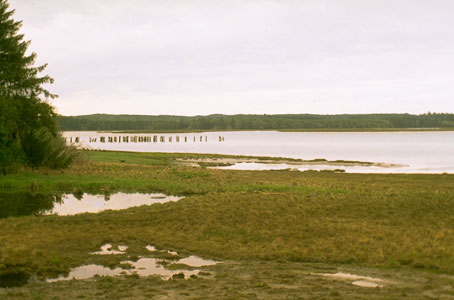 | |
| Descriptive Habitat Code: Estuaries (5) are wetlands where plants are rooted in salt water (1) or that regularly tolerate tidal changes that include all wetland vegetation (0). Photo: KMD | |
|
"Estuary" is the term given to the area at the end of a river where its fresh water mingles with the salt water of the sea. Also called harbors and bays, these areas nurture a diverse array of plants and animals. |
 American wigeon Anas americana Code: ANAAM Photo: RA | Distribution and
Habitat: It is distributed across North America from Alaska southward to Costa Rica Diet: Interesting fact: |
 Dunlins Calidris alpina Code: CAALP Photo: RA |
Distribution and Habitat: It is found in coastal areas as well as in the Great Lakes Region. Diet: Interesting fact: |
 Gapper's red-backed vole Clethrionomys gapperi Code: CLGA Photo: WDFW |
Distribution and Habitat: This species is found from sea level to the timberline on both sides of Washington State. Diet: Interesting fact: |
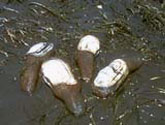 Geoduck clams Panopea abrupta Code: PAAB Photo: AP |
Distribution and Habitat: Diet:
Interesting fact: The common name for geoduck has a native American origin, meaning "dig deep", a reference to humans or sea otters digging them. |
 Green heron Butorides striatus Code: BUST Photo: RA | Distribution and
Habitat: The green heron is found in secluded wetlands, wooded sloughs, and along slow-moving water in ditches. Diet: Interesting fact: |
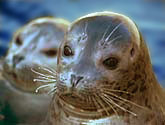 Pacific harbor seal Phoca vituline Code: PHVI Photo: KMD |
Distribution and Habitat: It is found in coastal waters, marine estuaries and rivers in areas free from ice. Diet: Interesting fact: |
 Pacific Oyster Crassostrea gigas Photo: AP |
Distribution and Habitat: Wherever there are accessible beaches, people can find clams and oysters at low tide.
Diet:
Interesting fact: Pacific oysters were introduced from Japan. They develop first as males, and after a year begin to function as females. |
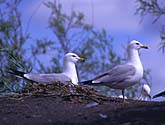 Ring-billed gull Laurs delawarensis Code: LADE Photo: RA |
Distribution and
Habitat: Diet: Interesting fact: |
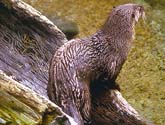 River otter Lutra canadensis Code: LUCA Photo: RA |
Distribution and Habitat: It can be found in coastal marine areas, rivers and lakes. Diet:
Interesting fact: |
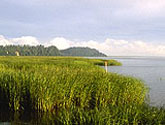 Spartina Spartina alterniflora Code: Photo: COOP |
Distribution and Habitat: Over the past five years, the combined statewide effort to eradicate Spartina from the marine waters of Washington State has been extremely successful. WSDA estimates that the effort has successfully reduced the overall statewide infestation from a high of more than 9,000 solid acres in 2003 to fewer than 1,250 solid acres projected in 2008. That is an unprecedented reduction of more than 85%.
Interesting fact: |
Home |
About Us |
How to Participate |
Biodiversity Modules |
Projects |
Maps |
News |
Resources